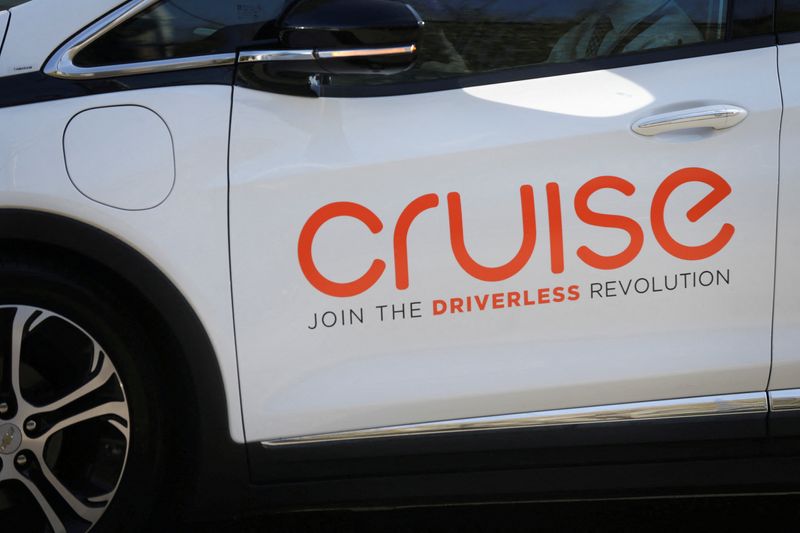By Abhirup Roy
SAN FRANCISCO (Reuters) -A General Motors (NYSE:GM) Cruise robotaxi that struck and dragged a pedestrian 20 feet (6 meters) in an October accident made a number of technical errors that exacerbated its failings after the collision, an analysis commissioned by GM showed on Thursday.
A failure to detect the woman's location, inaccurate detection of what part of the car hit the woman and an error about where the car itself was led the vehicle to continue after hitting the woman instead of making an emergency stop, according to the report by engineering consultancy Exponent (NASDAQ:EXPO).
The woman, who has not been identified, suffered injuries but survived.
Cruise, the self-driving unit of U.S. automaker GM, has halted operations and is facing multiple investigations, including one by the Justice Department, since the accident rocked the autonomous vehicle (AV) industry late last year.
The technical report by Exponent, part of a report from law firm Quinn Emanuel, provides a second-by-second account of how the accident unfolded and an in-depth look at the technical errors.
The accident occurred after the pedestrian was hit by another vehicle in an adjacent lane, one car length ahead, and flung into the path of the Cruise AV, named Panini.
The Cruise car could not have predicted the accident, the report said. It detected the other car hit the person and marginally slowed down a fraction of a second before it hit the woman itself.
But then it failed to locate her. The woman fell and much of her body, except her legs, were out of view of the lidar object detection sensor. The Cruise car's left wheel ran over her before it came to a halt, Exponent said.
At that point, the vehicle could have made an emergency stop in place, but it did not. Mistaking the hit as a side-collision instead of a frontal impact, it moved ahead for about 20 feet at 7.7 miles per hour (12.4 km per hour), dragging the pedestrian underneath, pursuing the prescribed goal of pulling over to the curb, for safety.
In fact, the car was already in the lane next to the curb, but it did not know that because of a location error, the review found.
The pedestrian's feet and lower legs were visible in the wide-angle left side camera from the time of impact to the final stop, but, despite briefly detecting the legs, neither the pedestrian nor her legs were classified or tracked by the vehicle, Exponent said.
It added that it found no issue with sensors or vehicle maintenance.
Cruise in a blog post on Thursday said it had updated its software to address the underlying issues.
The report itself made clear a human would have done better.
"After the AV contacted the pedestrian, an alert and attentive human driver would be aware that an impact of some sort had occurred and would not have continued driving without further investigating the situation," Exponent said.
